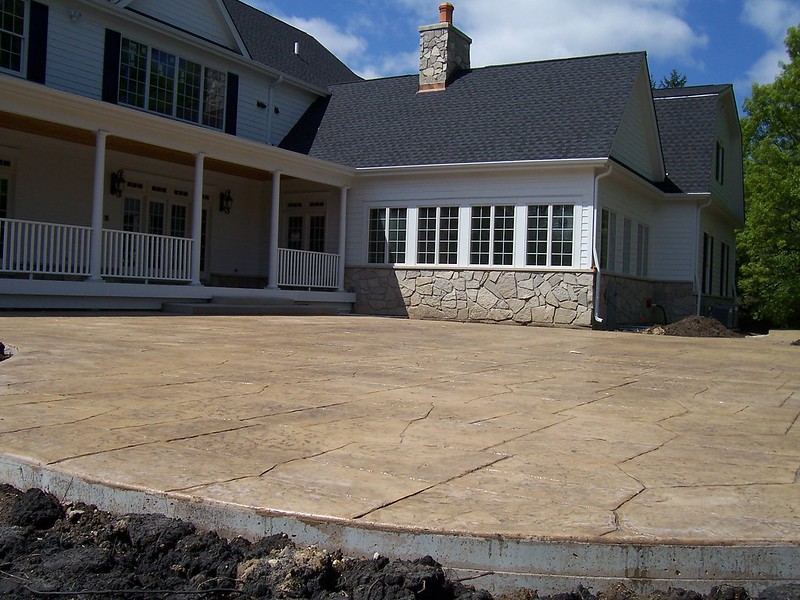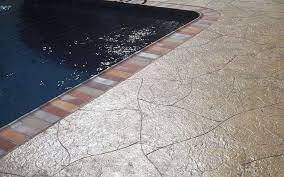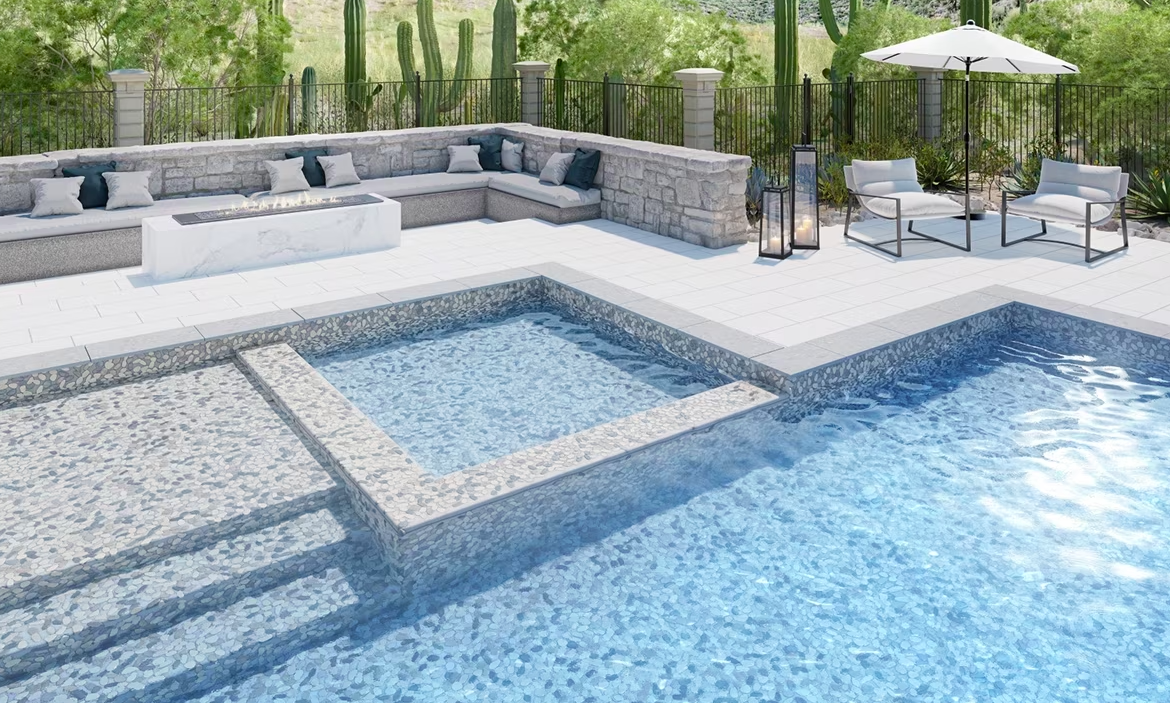Tired of your plain outdoor space? Transform it into a stunning oasis with a stamped concrete patio. Picture yourself stepping onto an intricately patterned surface, adding elegance and charm to your outdoor area. Not only is stamped concrete visually captivating, but it’s also durable and low maintenance. In this guide, we’ll explore design options and installation processes, as well as factors that influence costs. Get ready to revamp your space and impress your guests with a beautiful stamped concrete patio.
Brick Paver Repair
If you frequently find yourself stepping on uneven or cracked brick pavers, it’s time to take action and repair them to ensure a safe and visually appealing outdoor space. Paver repair is essential in maintaining the integrity and longevity of your outdoor area. Over time, brick pavers can become damaged due to various factors such as weather conditions, heavy foot traffic, or improper installation. These damages can not only be unsightly but also pose a safety hazard.
To start the process of brick paver repair, assess the extent of the damage. Inspect each paver for cracks, chips, or any signs of shifting. Once you have identified the problem areas, remove the damaged pavers carefully using a pry bar or a flat shovel. Clear away any debris or loose material from the area before proceeding.
Next, prepare the base by adding a layer of compacted sand or gravel. This will provide a stable foundation for the new pavers. Place the replacement pavers in the desired pattern, making sure they are level and securely fitted. Fill any gaps with sand or polymeric jointing sand to ensure a tight and stable finish.
Regular maintenance and prompt repair of brick pavers will not only enhance the overall appearance of your outdoor space but also prevent potential accidents. By investing time and effort into paver repair, you can enjoy a safe and beautiful outdoor area for years to come.
Paver Repair Cost
Calculating the paver repair cost can be a straightforward process once you understand the factors involved. Whether you have damaged pavers or simply want to refresh the look of your outdoor space, it’s important to know what to expect in terms of expenses. Here are four key factors that can impact the cost of paver repair:
- Type of pavers: The material of your pavers plays a significant role in the repair cost. Different types of pavers, such as concrete, brick, or natural stone, have varying price points.
- Extent of damage: The severity and extent of the damage will also affect the repair cost. Minor issues like cracks or loose pavers may be less expensive to fix compared to major structural damage or extensive re-leveling.
- Labor costs: The amount of labor required for the repair job will impact the overall cost. Complex repairs or larger areas may require more time and expertise, resulting in higher labor costs.
- Additional materials and equipment: Depending on the repair needed, additional materials and equipment, such as adhesives, sealants, or specialized tools, may be required. These extra expenses should be factored into the overall cost.
Common Paver Issues
When it comes to your outdoor space, common paver issues can be a real headache. Whether you have brick pavers, concrete pavers, or any other type of pavers, there are several problems that can arise. One of the most common issues is shifting. Over time, pavers can shift due to changes in the ground underneath them or simply from regular use. This can result in an uneven surface and potential tripping hazards. Another issue is settling. Pavers may settle unevenly, causing gaps and an unattractive appearance. Additionally, surface damage is a common problem. Pavers can become cracked, chipped, or stained, diminishing the overall aesthetic appeal of your outdoor space. These issues not only affect the appearance of your patio or walkway, but they can also pose safety risks. It’s important to address these problems as soon as possible to prevent further damage and ensure the longevity of your pavers. By understanding these common paver issues, you can be proactive in maintaining your outdoor space and enjoy a beautiful and safe environment.
DIY vs. Professional Repairs
When it comes to paver repairs, you have the option to tackle them yourself or hire professional services. Both approaches have their pros and cons, so it’s important to consider your skills, time availability, and the complexity of the repairs before making a decision. To help you make an informed choice, here are four key factors to consider:
- Expertise: DIY repairs require a certain level of knowledge and experience. If you have previous experience with paver repairs and feel confident in your abilities, then tackling the repairs yourself could save you money. However, if you’re unsure or lack the necessary skills, it’s best to leave it to the professionals to ensure the job is done correctly.
- Time and Effort: Repairing pavers can be time-consuming and labor-intensive. DIY repairs may require you to dedicate a significant amount of time and effort, especially if the repairs are extensive. On the other hand, hiring professionals can save you time and allow you to focus on other tasks or activities.
- Equipment and Materials: DIY repairs may require you to invest in specific tools and materials, such as a paver saw or specialized adhesives. Consider the cost of acquiring these items versus the cost of hiring professionals who already have the necessary equipment and materials.
- Cost: While DIY repairs can save you money on labor costs, there are other factors to consider. Mistakes made during the repair process can end up costing you more in the long run. Professionals have the expertise to do the job right the first time, minimizing the risk of costly errors.
Ultimately, the decision between DIY repairs and hiring professionals depends on your individual circumstances. Consider your skills, time availability, and the complexity of the repairs to make the best choice for your outdoor space.
Case Studies and Examples
One common case study to consider is the successful repair of a sunken paver patio. Imagine you have a beautiful outdoor space with a paver patio, but over time, you notice that the pavers have started to sink in certain areas. This can be a frustrating and unsightly problem, but it’s not uncommon. Fortunately, there are solutions. In this case study, a homeowner noticed that their paver patio had sunk in one corner, creating an uneven surface and causing water to pool in that area. They decided to hire a professional paver repair company to fix the issue. The company carefully removed the sunken pavers and assessed the underlying base. They discovered that the base had eroded over time, leading to the sinking. The professionals then re-compacted the base and added a layer of sand before reinstalling the pavers. The end result was a level and stable patio that looked as good as new. This case study highlights the importance of addressing paver issues promptly and seeking professional help when needed. By doing so, you can ensure the longevity and beauty of your outdoor space.
Maintenance and Prevention
To maintain the longevity and beauty of your stamped concrete patio, regular maintenance and preventative measures are essential. Here are four key steps you can take to keep your outdoor space in prime condition:
- Clean Regularly: Remove dirt, debris, and stains by sweeping or using a leaf blower. For tougher stains, a gentle pressure wash or a mixture of water and mild detergent can do the trick. Avoid using harsh chemicals or high-pressure settings that could damage the surface.
- Seal the Concrete: Applying a sealant every few years helps protect your stamped concrete patio from moisture, UV rays, and wear and tear. It also enhances the color and pattern, giving it a fresh and vibrant look. Consult with a professional to choose the right type of sealant for your specific patio.
- Prevent Cracks: Avoid heavy objects or furniture that can cause cracks or indentations in the concrete. Use furniture pads or mats to distribute weight evenly. In colder climates, protect your patio from freeze-thaw cycles by using a de-icing agent and avoiding the use of salt.
- Address Issues Promptly: If you notice any cracks, chips, or unevenness, address them promptly to prevent further damage. Small cracks can be repaired with concrete patching materials, while larger issues may require professional assistance.
Call to Action
To take the next step in maintaining and repairing your stamped concrete patio, reach out to professionals for expert assistance or request quotes for your specific project. Whether you need to fix cracks, resurface the concrete, or enhance the overall look of your patio, seeking professional help will ensure that the job is done correctly and efficiently. By reaching out to experts in stamped concrete, you can benefit from their knowledge and experience in handling various repair and maintenance tasks.
When it comes to stamped concrete, it’s important to find professionals who specialize in this specific type of work. They will have the expertise and tools necessary to address any issues with your patio and provide tailored solutions. Additionally, they can guide you through the process of selecting the right materials and finishes to enhance the aesthetic appeal of your outdoor space.
To find the right professionals for your stamped concrete patio project, consider reaching out to local contractors or companies that specialize in concrete repair and maintenance. Ask for recommendations from friends, family, or neighbors who have had similar work done. By requesting quotes from multiple professionals, you can compare prices and services to make an informed decision.
Key Takeaways
- Stamped concrete patios add visual appeal and elegance to outdoor spaces.
- They are durable, long-lasting, and require low maintenance.
- Stamped concrete is resistant to fading, cracking, and weather damage.
- The cost of stamped concrete is influenced by factors such as patio design, stamping patterns, additional features, labor and material costs, and any necessary repairs or preparation work.





